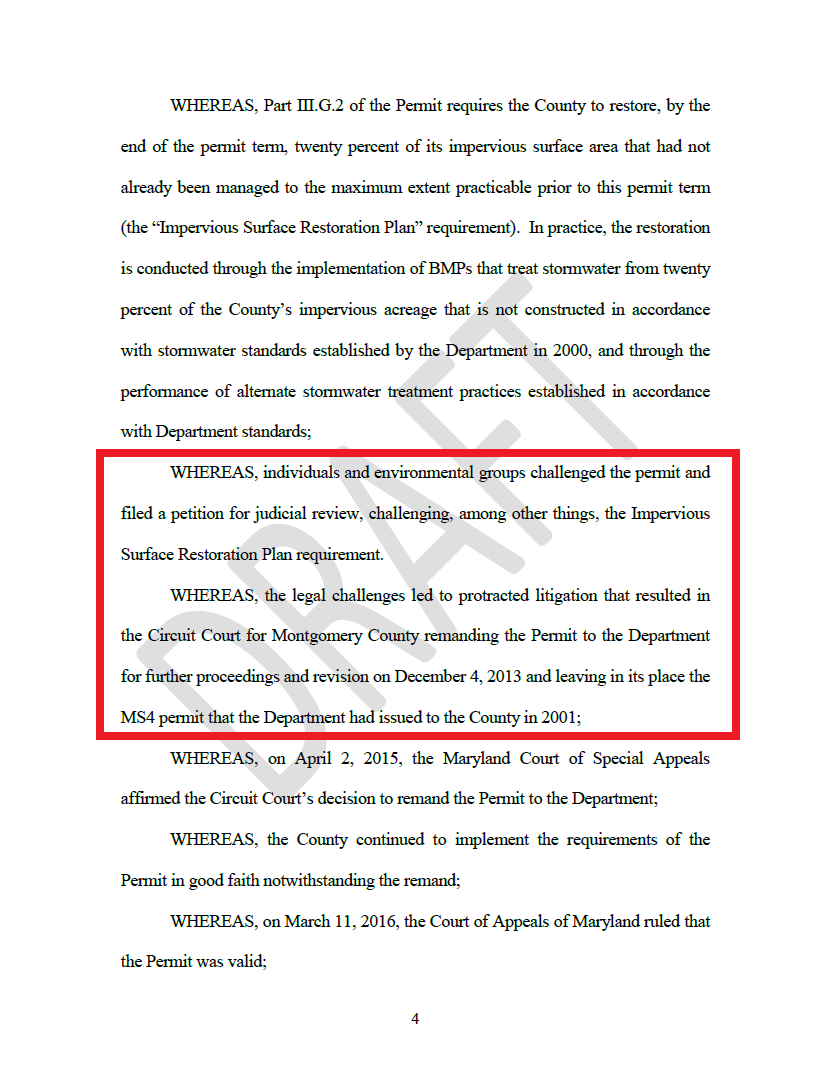Today, I am pleased to present a guest post by Sylvia S. Tognetti:
In the aftermath of back to back storm events and flooding, and with 60 candidates in the primary race for various slots on the County Council, it seemed like it would be useful to find out their views on Leggett’s line-item veto of the 5-4 majority decision by the Council pertaining to the stormwater CIP budget. ANS, on behalf also of Potomac Conservancy, Friends of Sligo Creek, Conservation Montgomery and the Montgomery Countryside Alliance, sent all of them a single question:
The County Executive issued a line-item veto of a majority Council decision on the stormwater CIP budget. In what direction do you think Montgomery County should take its stormwater program? How can we best prepare for future stormwater needs?
We received 17 responses of which three were from incumbents whose views have already been expressed through their public statements and Council vote – so their response was not expected. That leaves 41 who did not reply and are not incumbents and whose views are unknown.
A few candidates who have not responded let me know in person that, being the week before early voting, this question came at a bad time. I hear you! We would have much preferred to see this radical proposal by the Executive come before the Council with time to properly review it and consider alternatives in an open process, which is what we advocated for, and the Council called for in its majority decision. This is the situation faced now by existing Council members, and we thank those who took the time to understand and thoughtfully consider this complicated issue in this busy time. We can only wonder what those who did not respond would do if elected and presented with a radical proposal in the context of a budget decision, just before a primary election.
This is the first time a line-item veto has been used in 25 years. In its decision, the Council rejected a radical change in how stormwater projects are managed that was proposed by the County Executive. In the proposed new approach, stormwater capital projects would have been bundled and outsourced to a single contractor in a single, 5-year design-build-maintenance contract to treat stormwater runoff from 526 acres of impervious surfaces. This is intended to meet obligations under the next 5-year stormwater permit, which are not yet known, because we will not see a draft of the next permit until this Fall. Instead the Council accepted the recommendation of the Transportation & Environment Committee, to continue the 44 suspended projects – many well into the design phase and ready for construction, under the current approach, and called for an open and transparent public review of the program as a basis for improvements. Six votes are needed to override this veto and continue moving the county’s stormwater program forward.
This proposal came in addition to a $243 million cut in the 6-year stormwater CIP budget, which was accepted by the Council. This was based on an assumption that obligations under the next stormwater permit will be to retrofit only 5% of impervious surfaces that are not already treated to the Maximum Extent Practicable, instead of the 20% required under the current permit that will be completed this year. Although this percentage remains to be determined by MDE, which issues these permits, they have publicly stated it is likely to be at least 10%.
A key concern is whether the County will adhere to its new green infrastructure policy, in which it made a commitment to meet at least 60% of its MS4 permit requirement using green infrastructure to manage stormwater. The policy also committed to evaluating the costs and multiple environmental social and economic benefits of these projects, compared with single-purpose gray infrastructure as a basis for project selection.
Many of these projects would be necessary regardless of permit obligations and can reduce the costs of maintaining gray infrastructure. For example, when stormwater erodes urban streams, it erodes and batters sewer pipes, causing Sanitary Sewer Overflows (SSOs). By enabling water to infiltrate into soil, green infrastructure slows down runoff, and helps to protect gray infrastructure, as well as reduce flooding and provide many other well-known benefits associated with green spaces. As discussed at a Water Forum held last December, stormwater runoff from up-county watersheds, that enter the Potomac upstream from drinking water intakes, also increases the cost of water treatment, which is why WSSC is planning to spend $83 million on a mid-river submerged channel intake at the Potomac Water Filtration Plant, and an additional $157 million to upgrade the plant to handle the overloading of sediment. In other words, costs not paid through the Water Quality Protection Charge would just reappear on our water bills, in the form of higher costs to treat drinking water and maintain pipes.
Candidate responses can be viewed on the ANS blog. Some are more detailed than others and present some good ideas, that could be considered if there were an open and transparent review of the program and alternative approaches. Only three favor the Executive’s single contractor approach, with some modifications.
More background information on the issue can be found in this Maryland Sierra Club post, and letter to Executive Leggett from leaders of the stormwater Partners Network, representing the Potomac Conservancy, the Audubon Naturalist Society, Conservation Montgomery, Friends of Sligo Creek, the Montgomery Countryside Alliance and the Maryland Sierra Club.












